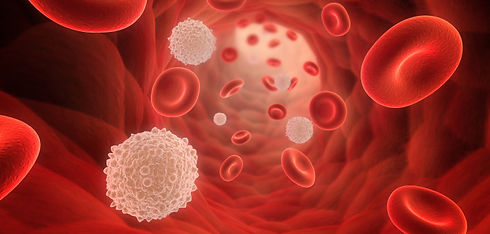Leukemia

Adult
Onset
leukemia
We distinguish adult-onset leukemia from pediatric because the diseases and their treatments are different.
Today, childhood leukemia patients have a very high rate of response and cure; while the adult forms of this disease continue to pose more difficult challenges.
For that reason, we focus our testing here at the Nagourney Cancer Institute on adult leukemia forms.
Leukemia is a group of diseases that affect the development of blood cells in the bone marrow. The type of cell affected and the rate of cell growth determine the leukemia type.
types
of leukemia
Acute Lymphocytic (Lymphoblastic) Leukemia (ALL) is the most common type of leukemia in children, but it also occurs in adults. ALL is caused by an overproduction of immature lymphocytes. In adults, the risk of developing this disease increases after age 50.
Acute Myelogenous (Myelocytic, Myeloblastic, Myeloid or granulocysts) Leukemia (AML) affects the granulocytes in the bone marrow. In AML, these cells do not mature normally. The bone marrow becomes filled with blasts, which inhibit the production of normal cells. This is the most common form of adult onset leukemia.
Chronic Lymphocytic (Lymphoblastic) Leukemia (CLL) is the second most common type of adult onset leukemia and is found most often after age 50. This type occurs when the bone marrow and lymph organs produce too many mature lymphocytes.
Their overabundant production crowds out other cells and can collect in the blood, bone marrow, spleen and lymph node tissue. CLL typically progresses slowly and can take years to display any symptoms.
Hairy Cell Leukemia (HCL) is a rare subtype of CLL.
Chronic Myelogenous (Myelocytic, Myeloblastic, Myeloid or Granulocytic) Leukemia (CML) occurs in people with an acquired genetic abnormality that causes a portion of one chromosome to break off and re-attach to another chromosome. This exchange, called a translocation is known as the Philadelphia chromosome.
This mutation is found only in blood-forming cells and is not inherited. The resulting transformation prohibits normal growth of myeloid cells, which causes the bone marrow to accumulate too many white blood cells and platelets, but may decrease the amount of red blood cells. The disease presents in a slow growing form known as chronic phase but then progresses to accelerated and blastic stages over time.


treatment
options
The first line of treatment for ALL and AML is chemotherapy and for recurrent cases, some oncologists recommend bone marrow transplants.
With CLL, chemotherapy, and radiation therapies are also employed, with some professionals recommending blood and bone marrow transplantation.
Interferon oral Hydrea (hydroxyurea) and oral Myleran (busulfan) were the first treatments for CML. But with the cause of CML now known, researchers have developed a targeted therapy called Gleevec (imatinib), which focuses on the aberrant protein.
This therapy must be taken continuously in order to be effective. Some physicians recommend transplantation for younger patients with this disease.
Leukemias are among the most chemo-responsive forms of cancer.
While the specific drug combinations vary by disease type, the anthracyclines (doxorubicin, daunorubicin, and idarubicin) plus cytarabine are widely used in both AML and ALL, while methotrexate, L-asparaginase, prednisone, and vincristine are widely used only in ALL.
In CLL, fludarabine, Rituxan, and alkylating agents like Cytoxan and chlorambucil are mainstays of therapy. These protocols, developed over years of clinical trials, assign patients to the drugs for which they have the greatest statistical probability of response. The fact that all patients with leukemia have an equal likelihood of response to a drug does not mean they will respond equally.
Nagourney Cancer Institute exposes living cancer cells, obtained from your blood or bone marrow sample to a variety of chemotherapy drugs and novel compounds. This test helps select the most effective and least toxic drug regimen for your leukemia.
Call us today at 1-800-542-4357 or email us through our Contact Us page to see how the Nagourney Cancer Institute can help you identify the most effective leukemia treatment based on your unique cancer cell makeup.

